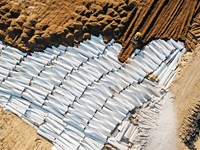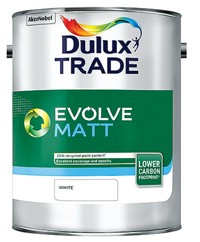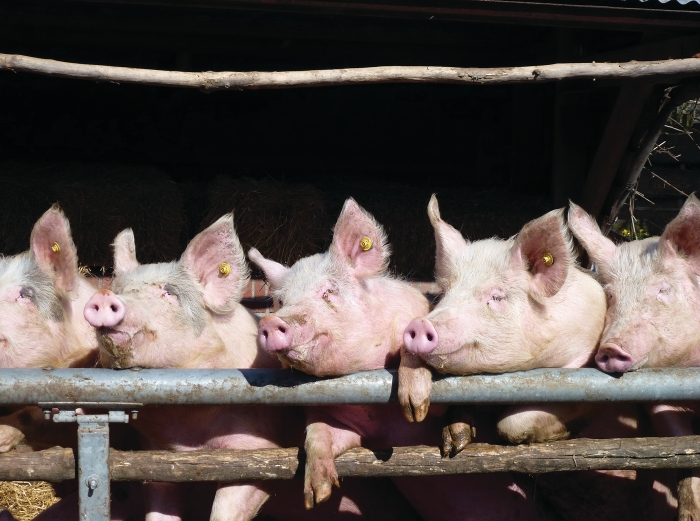Advertisement
Grab your lab coat. Let's get started
Welcome!
Welcome!
Create an account below to get 6 C&EN articles per month, receive newsletters and more - all free.
It seems this is your first time logging in online. Please enter the following information to continue.
As an ACS member you automatically get access to this site. All we need is few more details to create your reading experience.
Not you? Sign in with a different account.
Not you? Sign in with a different account.
ERROR 1
ERROR 1
ERROR 2
ERROR 2
ERROR 2
ERROR 2
ERROR 2
Password and Confirm password must match.
If you have an ACS member number, please enter it here so we can link this account to your membership. (optional)
ERROR 2
ACS values your privacy. By submitting your information, you are gaining access to C&EN and subscribing to our weekly newsletter. We use the information you provide to make your reading experience better, and we will never sell your data to third party members.
Environment
Green For Eternity
Start-up companies introduce two routes to stay environmentally friendly after you’re dead and gone
by Sarah Everts
June 28, 2010
| A version of this story appeared in
Volume 88, Issue 26
Few people like thinking about their own death and less so the details of their body’s eventual fate in a coffin underground or in a cremation chamber. Yet as people consider their environmental footprint during life, concerns about one’s posthumous impact has inspired entrepreneurs to develop green alternatives to standard Western practices. Two such alternative technologies will soon launch in either North American or European markets.
Environmentally minded individuals have several concerns about Western death practices. Some worry that the formaldehyde and other chemicals undertakers use to prepare bodies for burial may leach into the water table. When it comes to cremation, they worry about energy usage: To sustain temperatures of nearly 1,000 °C, cremation of one body on average consumes so much fuel that 573 lb of carbon dioxide is released into the atmosphere, says biochemist Sandy Sullivan, who has developed a cremation alternative with his company, Resomation Ltd., based in Glasgow, Scotland. Perhaps topping the list of environmental concerns about cremation is that crematorium smokestacks release mercury found in dental amalgam fillings into the air.
Regulators in at least seven European countries, including Germany and Sweden, require that crematoria filter mercury out of smokestacks. The U.K.’s Department for Environment, Food & Rural Affairs is also establishing regulations, and it notes in a position paper that “without intervention, mercury emissions from crematoria in the U.K. will increase by two-thirds from 2000 to 2020,” and without regulations, crematoria will also be “by far the biggest single contributor to national mercury emissions” by 2020. Crematoria emissions are expected to reduce naturally by 2055, as mercury fillings fall out of use. But currently, Sullivan says, cremation is responsible for some 16% of the mercury in the U.K.’s air.
The U.S. Environmental Protection Agency does not regulate mercury from crematoria smokestacks. “Good empirical data on the magnitude of mercury emissions from crematoria are lacking,” according to EPA’s website. But the agency’s website also notes that one study found that, in 2005, crematoria in the U.S. released about 6,600 lb of mercury into the environment.
Sullivan got the idea for his alternative to cremation when working on a European Union-funded project to invent safe ways to dispose of cattle contaminated by bovine spongiform encephalopathy (also known as mad cow disease) and other prion diseases. Sullivan decided to apply the technology he developed to human remains and started Resomation two-and-a-half years ago.
The Resomation process breaks down a corpse using alkaline hydrolysis instead of extremely high heat. The body is placed in a steel chamber along with potassium hydroxide at high pressure (10 bar) and a temperature of 180 °C, which is 80% cooler than a standard crematorium, Sullivan notes.
The raised pressure and temperature increase the speed of the alkaline hydrolysis reaction so that the body reaches a similar end point as in standard cremation—just bones left to be crushed up—in two to three hours. The alkaline hydrolysis method “has a much lower carbon footprint than cremation” because the tissue is not burned and the process also uses an eighth of the energy required for cremation, Sullivan says. Any dental amalgam remains in the vessel after the process and is easily separated from the bone ash and sent for recycling, he adds.
Resomation has been approved in six U.S. states--Maine, Colorado, Florida, Minnesota, Oregon, and Maryland—and is under review in a handful more, Sullivan says. Sullivan has sold three units to North American clients for approximately $444,000 each. The cost charged for the service, he says, is up to the provider, but it will likely be more than for a traditional cremation, he says.
Price turns out to be an important factor for those seeking cremation, says John W. Ross, executive director of the Cremation Association of North America. “A bulk of the cremation market is favorably inclined toward green cremation until you raise the issue of price.”
Most “consumers are not ready to bear” the higher costs of the Resomation process, Ross says. However, he estimates that about 10% of the market will choose an environmentally sensitive alternative no matter what the cost.
Then there are those like Susanne Wiigh-Masak who wish to benefit the ground that they get buried in. She was determined to find a way to permit people to be composted into dirt from a biodegradable coffin—instead of proceeding to dust via a rotting process in a sealed casket, a method that doesn’t produce soil. And she wanted to do so in an environmentally sensitive way.
Before starting Promessa Organics, a corpse-composting company in Göteborg, Sweden, Wiigh-Masak spent 15 years as an environmental engineer at a petrochemical plant. This gave her the background to develop a technology called Promession, which she says creates the conditions that allow a corpse to compost to soil instead of rotting. One obstacle that interferes with humans being able to compost into soil, Wiigh-Masak says, is that humans are buried in one piece, which is too big of a challenge for the microorganisms and animals that typically turn organic waste into dirt. Other factors preventing bodies from composting to soil include too much moisture in human remains and coffins that don’t permit enough oxygen to enter. All this typically leads to rotting, liquefying, and decaying of bodies instead of a soil-producing process, Wiigh-Masak says.
Her approach is sort of the antithesis to cremation, in that it uses cold instead of heat to break down tissue. Specifically, the Promession process fragments a corpse into pieces that can be managed by composting animals. In a first step, a body is frozen with liquid nitrogen and then vibrated so that the body breaks into smaller pieces. Next, the pieces are transported to a freeze dryer under vacuum, which removes the 70% water found in a human body. Although Wiigh-Masak aims for Promession to be an alternative to embalming, she says that this vacuum process would remove any formaldehyde from corpses that were embalmed anyway. Finally, with equipment developed by the food industry, chunks of mercury and other metals as small as 1 mm in diameter are removed. The remains of the deceased are placed in a biodegradable, cornstarch coffin that is about half the size of a typical casket. Buried in a shallow topsoil grave, where more oxygen can access the remains, the corpse will become soil within one year, she says. Her apparatus does not require a chimney or ventilation, so adds no residues to air or water, Wiigh-Masak says.
Wiigh-Masak has received regulatory approval to begin doing clinical tests of the process in Sweden and Germany this fall, with humans who have volunteered for the procedure. Other tests will begin later this year in South Korea.
Both Sullivan and Wiigh-Masak acknowledge that they are entrepreneurs in an industry that most people prefer to avoid thinking about. But as Sullivan puts it, “No matter how you look at it, there’s just no pretty way to go.” The question is whether you will go a little greener, he adds.






Join the conversation
Contact the reporter
Submit a Letter to the Editor for publication
Engage with us on Twitter